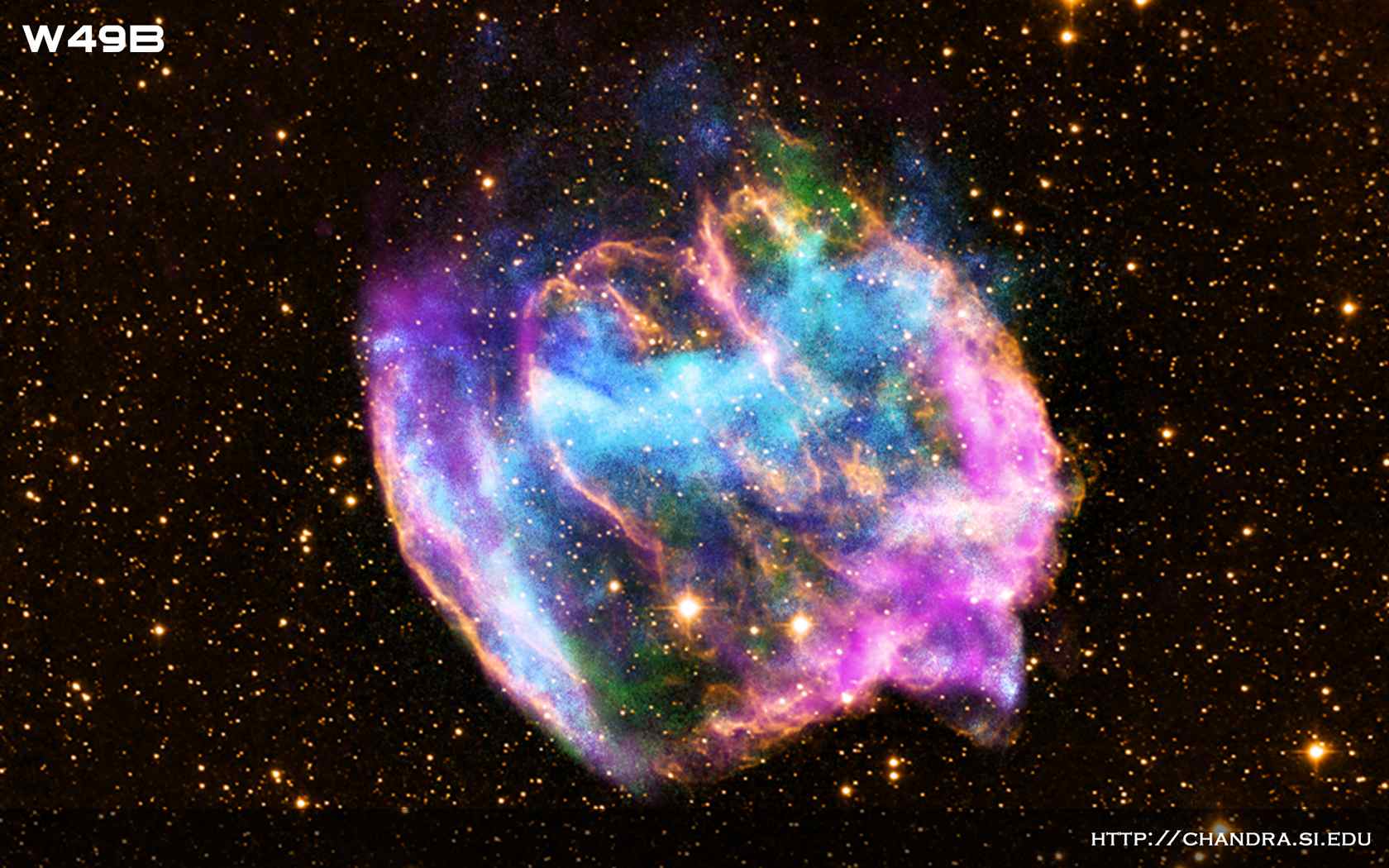Analyzing the Universe: Course Wiki: H-R Diagram/Stellar Evolution
The astronomy department from the University of Nebraska-Lincoln hosts a great website with various educational resources,
one of which is a very informative Interactive H-R Diagram. Let's take a closer look at this guide.
1. Open the Interactive H-R Diagram. Note that the first point the red x appears is where our star the sun resides.
2. Select magnitude for the y-axis, note that this is absolute magnitude, which quantifies the brightness of a star if it were
placed at a distance of 10 parsecs (32.6 lightyears) from an observer. This gives a true measure of the power output of a star.
Next select the "show luminosity classes" under options and leave the instability strip button unselected for now. Also below
these buttons are options for plotted stars. Select the "both the nearest and brightest stars" button so that your screen looks
like mine below.
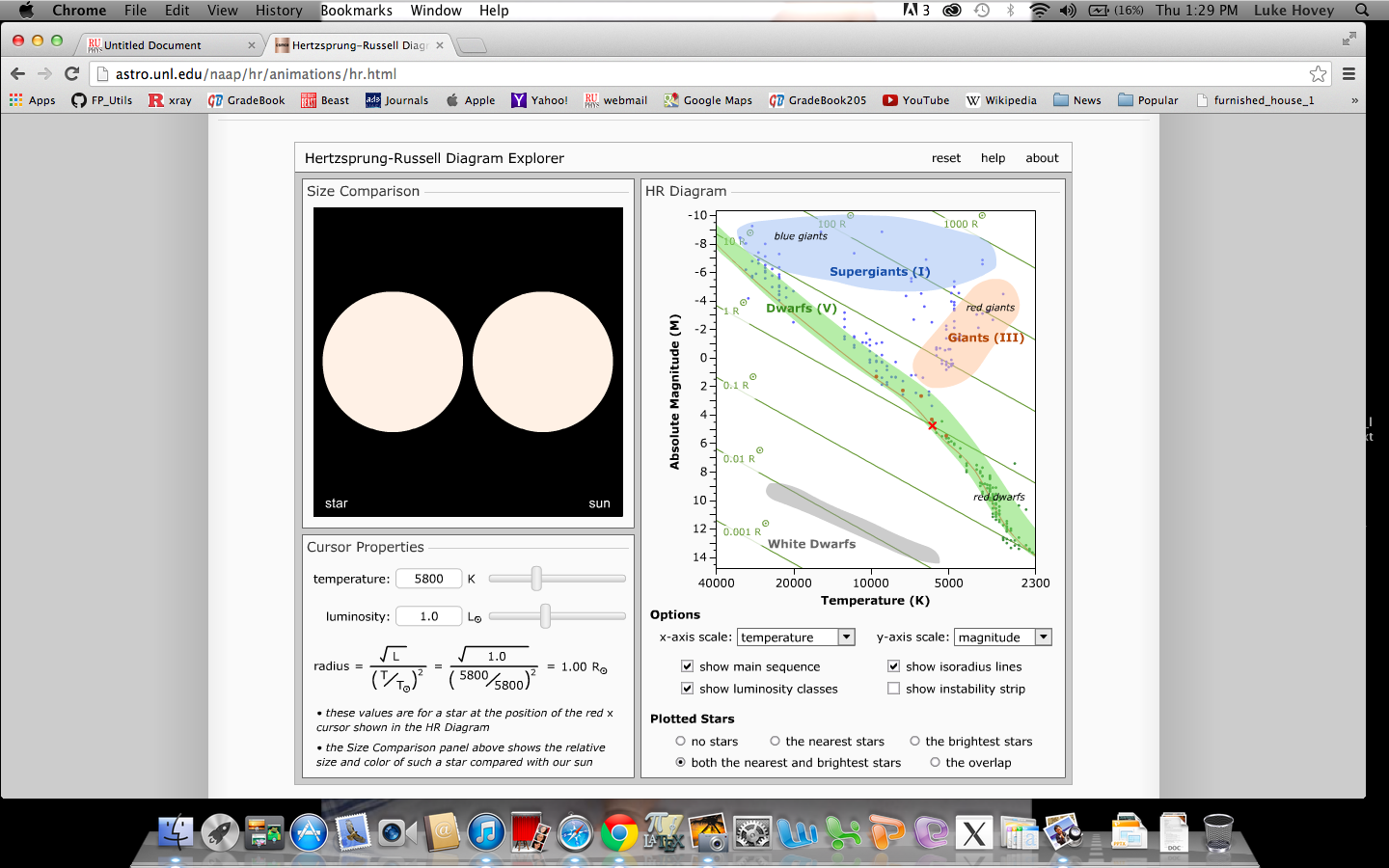
3. Let's discuss the many features of the H-R diagram that is displayed. The x-axis of the plot represents the temperature of a
star (please note that the temperatures go from high to low if we look from left to right on the axis). This temperature scale is in
Kelvin, which is similar to the centigrade scale in that a difference of 1 degree celcius is equal to a difference of 1 degree in the
Kelvin scale of temperature, but zero (0) Kelvin is equal to about -273 degrees celcius. Zero Kelvin is known as Absolute Zero,
the temperature at which a gas would have zero energy, other than their own quantum fluctuations.
The green diagnol lines that run from top-left to bottom-right, are lines upon which stars have the same physical size. If you
look at the screen near the bottom left you will see tha mathematical expression that relates a star's temperature and luminosity
(magnitude) to its radius. A green band that also runs from top-left to bottom-right with a thin red line running through it is
known as the "Main Sequence". These are stars in the prime of their life where they have achieved a long-sustaining balance
between the gravitational pressure of the star that acts inward towards the firey core, and the pressure resulting from fusion in
said core that acts outward. This balance is called Hydrostatic Equilibrium.
At the top middle to right resides the Blue Supergiants. The Red Giant stars are immediately down and to the right of the blue
supergiants, while the White Dwarf stars are shown as the gray band at the bottom of the H-R diagram. All of these groups are
intimately related to the evolution of the main sequence stars, best described in two different paths based on the mass of a
given star.
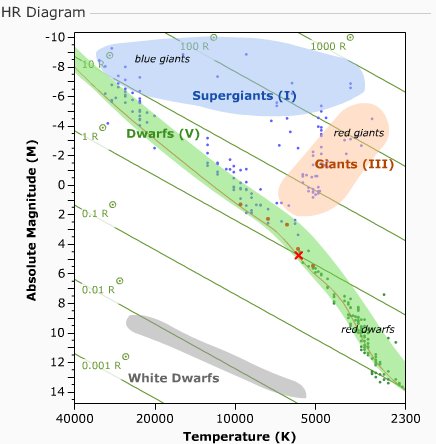
Low Mass Main Sequence Stars:
For low mass stars such as our sun, the majority of their lifetime (billions of years) is spent on the main sequence where they
maintain regular hydrostatic equilibrium where hydrogen is converted into helium in the star's core throught the process of
nuclear fusion. When all of the hydrogen is consumed, the pressure due to gravity will force the star to begin fusing helium,
which will prevent further collapse. This onset of helium fusion is brought about partiall due to the collapse causeing a shell of
hydrogen to begin fusing around the star's core. All of this causes increased radiation pressure that makes the star puff up into
its new stage of evolution, the red giant phase.
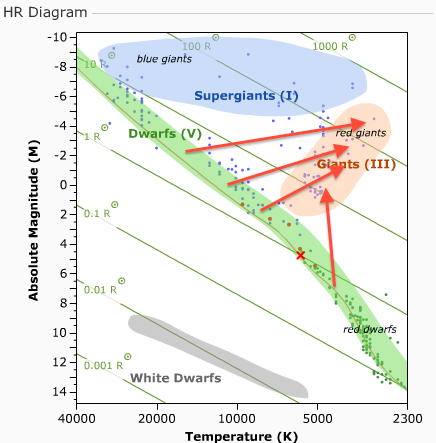
In the red giant phase the star will start to fuse all of the helium in the core, which starts another collapse that starts to fuse
helium in a shell around the core and a shell of hydrogen fusing surrounding both. This process will keep going until the star
fuses oxygen in its core. When all of the oxygen is consumed, the core will lack the proper conditions to continue fusing heavier
elements and gravity will finally win out...kind of anyway.
Gravity will collapse the star until quantum mechanical processes prevent the star from collapsing. There is a principle in
quantum mechanics known as the Pauli Exclusion Principle, that states simplt that two identicle particles, electrons in this
case, cannot have identical quantum mechanical properties (particle spin, energy, angular momentum etc...). This pressure is
called electron degeneracy pressure, and stops the star from collapsing when its radius is about the same as the earth. When
star reaches this new state it is said to become a white dwarf. Without any further interaction the white dwarf will exist
indefinately as it radiates away any residule energy from its younger, more active days.
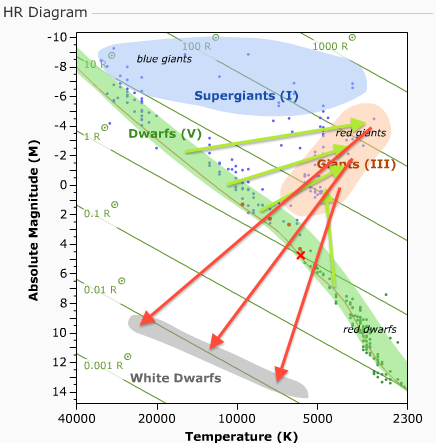
High Mass Main Sequence Stars:
For high mass stars, which are about ten times more massive then our sun, its evolution shares many similarities to that of the
low mass stars, but also diverges in many key aspects. Like low mass stars, high mass stars will consume all of its hydrogen in
the core, then begin fusing helium in the core while burning hydrogen in a thin shell around the helium core. This process also
acts to expand the star, but its luminosity and size is considerable larger then the red giants, putting them into the group known
as the blue supergiants. These stars will continue fusing sucessively heavier elements in their cores, but they can go beyond the
ability to fuse carbon and oxygen in their core, all the way up to iron. Iron is the most tightly bound nucleus and to fuse
elements beyond this actually requires an input energy, instead of producing energy that would normaly prop the star up against
its own collapse. At this point the star's core will collapse beyond the point of a white dwarf, since the core has more mass and
the gravitational pressure exceeds that of the electron degeneracy pressure. The core will collape until the electrons combine
with the protons and a super dense ball of neutrons remains that is the approximate size of nNew York city. Once again the pauli
exclusion principle kicks in and prevents the neutrons from occupying the same quantum mechanical states; this is known as
neutron degeneracy pressure. There are instances where the conditions will be such that gravitational pressure will be stronger
than this neutron degeneracy pressure, and the core will collapse into a black hole.
At the time of the collapse of the core something spectacurally violent occurs known as a Supernova. these areamong the most
violent explosions in the universe, where the energy produced can be greater then the net sum of the energy produced through
the star's lifetime. Supernovae can seem as hrbingers of death, but life as we know it today would be impossible without them.
Stars can only fuse elements up to iron in their firey cores, but all of the heavier elements are formed in supernovae. As these
massive stars explodes their guts are pushed outward enriching its galxy with heavy elements that will be used in sucessive
epochs of star and planet formation.

